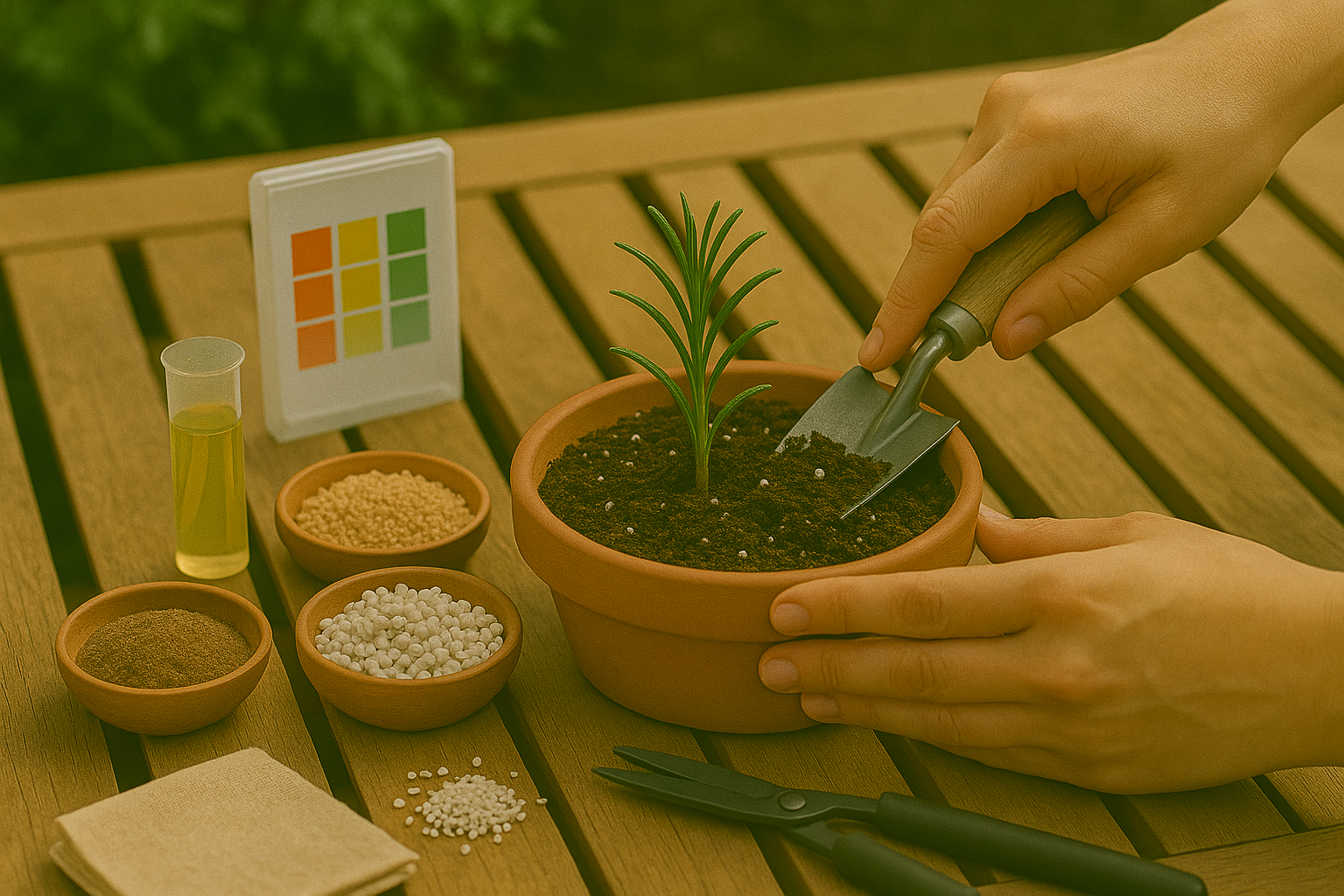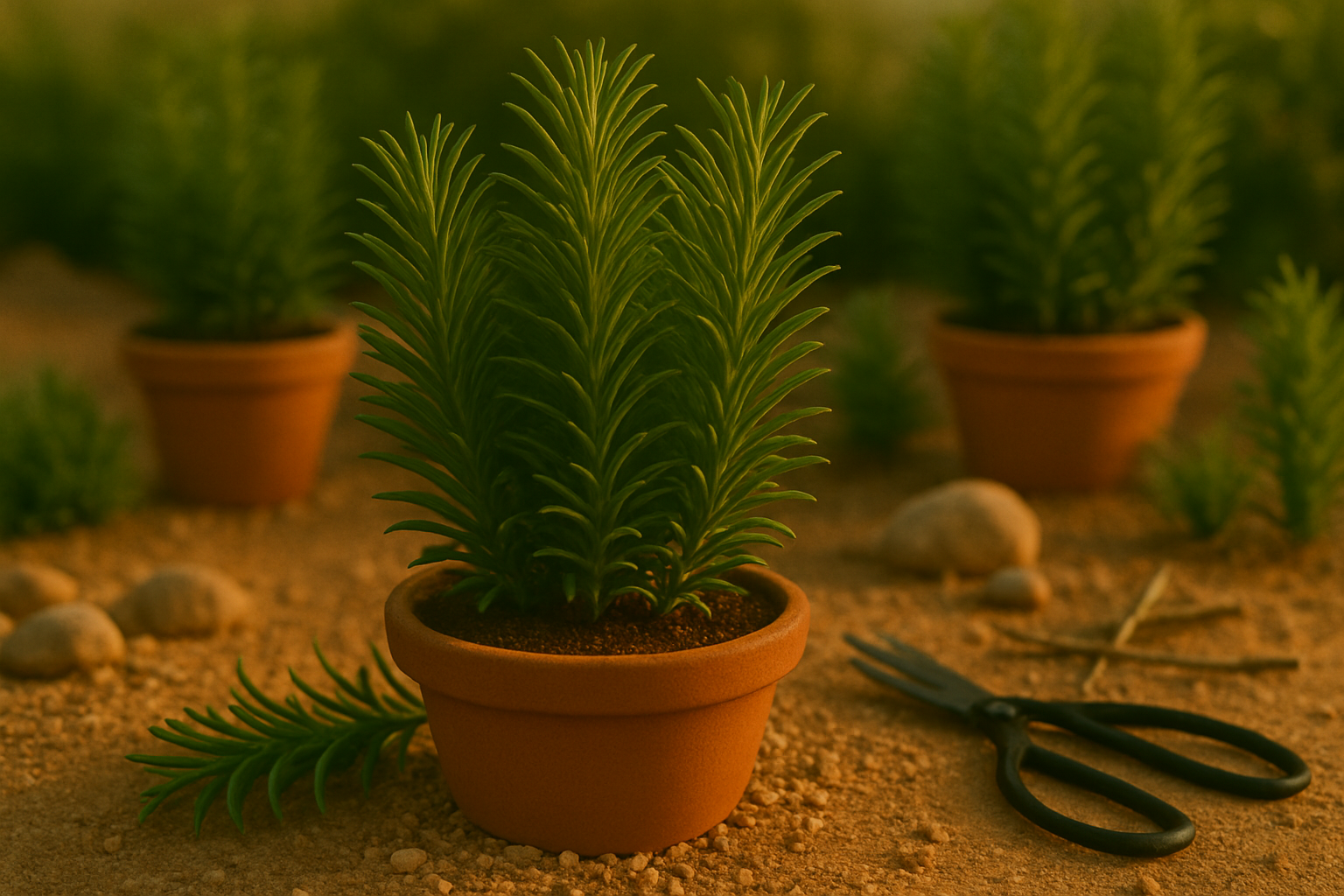Introduction
The best soil for rosemary is key to growing this aromatic and versatile herb, whether you’re cultivating it on a sunny windowsill or planting it out in the garden. Rosemary is beloved not just for its distinctive flavor and fragrant needles, but also for its resilience and beauty. Despite its hardy reputation, rosemary can be surprisingly picky about its soil. The right soil ensures your plant is healthy, disease-free, and bursting with those flavorful leaves perfect for everything from roasted potatoes to homemade bread.
In this post, we’ll break down exactly what the best soil for rosemary looks like, how to amend your garden soil or select the right potting mix, and common mistakes to avoid—like poor drainage or using heavy, clay-rich dirt. Plus, we’ll share easy tips and real-world examples from experienced gardeners to help your rosemary stay lush and productive all year round. Whether you’re a beginner or a green-thumbed enthusiast, these insights will put you on the path to growing thriving rosemary plants right at home.
Understanding Rosemary’s Soil Needs
Native to the sun-drenched, rocky hillsides of the Mediterranean, rosemary is a hardy herb adapted to survive in tough, arid conditions. This background shapes its ideal growing environment—think well-drained, gravelly soils rather than the rich, moist earth most common vegetables crave.
Rosemary’s roots detest sitting in water, so soil with excellent drainage is key; heavy clay or compacted soils can quickly cause root rot, wilting, and even plant death. Sandy or loamy textures with plenty of grit, like cactus mix or garden soil amended with sand and perlite, provide the airy structure rosemary loves.
Soil pH is another crucial detail: this herb prefers soil that is slightly acidic to neutral, around 6.0 to 7.0. Practically speaking, aim to plant rosemary in raised beds, containers, or the sunniest spots in your garden where rainwater won’t linger.
Poor soil choice is one of the most common stumbling blocks for new rosemary growers—yellowing, stunted growth, and leaf drop are all red flags pointing to soggy or dense soil. If you’re in a region with heavy rainfall or clay soil, try growing rosemary in pots using a Mediterranean-inspired potting mix. Don’t forget to add some small stones or gravel at the bottom of your containers for extra drainage.
Understanding and replicating rosemary’s native conditions in your garden is the surest path to vigorous plants and aromatic harvests.
Key Characteristics of the Best Soil for Rosemary
When growing rosemary, choosing the right soil is essential for a thriving, aromatic plant. One of the most important characteristics is excellent drainage—rosemary simply does not tolerate soggy roots. In poorly drained soils, excess moisture gets trapped around the roots, leading to root rot and fungal diseases that can quickly kill your plant.
Picture how rosemary naturally grows on rocky hillsides in the Mediterranean; it’s used to dry, well-draining conditions that keep its roots healthy. To mimic this at home, a soil that is sandy or loamy works wonders, allowing water to pass through quickly without pooling. Avoid heavy clay soils, which hold onto water and can suffocate rosemary’s sensitive roots. If your garden soil is naturally clay-heavy, try amending it with coarse sand, perlite, or gravel to improve aeration and drainage.
The ideal pH for rosemary ranges from slightly alkaline to neutral, generally between 6.5 and 7.5. If you’re uncertain about your soil’s pH, inexpensive test kits are available at most garden centers, and you can adjust the pH by incorporating lime to raise it if necessary.
A loose, gritty soil structure also prevents compaction and allows air to reach the roots, which is just as important as drainage. Mixing in organic matter like compost can help boost fertility, but go easy—rosemary doesn’t like overly rich or moisture-retentive soils. For potted rosemary, a cactus or succulent potting mix is usually a safe bet.
By prioritizing fast drainage, maintaining the right pH, and ensuring a light, open soil texture, you set your rosemary up for robust growth and flavorful sprigs that elevate any recipe.
Optimizing Soil Conditions (Amending, Preparing, and Testing)

Before planting rosemary, taking the time to optimize your soil can make a huge difference in your plant’s health and flavor. Start by testing your soil’s drainage: dig a hole about 12 inches deep and fill it with water, letting it drain completely. Then refill the hole and time how long it takes to drain. If the water disappears within 2–4 hours, you have ideal drainage for rosemary.
For pH testing, inexpensive home test kits are available at garden centers and online. Rosemary thrives in slightly acidic to neutral soil, ideally with a pH between 6.0 and 7.0. If your soil is too acidic, add a bit of garden lime; for alkaline soils, incorporate sulfur or organic matter like compost to help balance the pH levels.
Improving poor soil structure is also key. If your garden soil is heavy clay and tends to stay wet, mix in coarse sand, perlite, or small gravel to boost drainage—rosemary hates “wet feet.” For sandy soils that drain too quickly, add compost or well-rotted manure to help retain moisture and nutrients. A simple blend of equal parts compost, garden soil, and perlite or sand usually creates a well-drained, aerated environment perfect for rosemary’s Mediterranean roots.
In containers, always use a high-quality potting mix amended with some grit or perlite, avoiding moisture-retentive mixes.
When you’re ready to plant, clear away weeds and debris, loosen the soil down to at least 10 inches, and mix your amendments thoroughly before planting. Raised beds or containers can also be a great option if your ground soil is hard to improve. Remember to plant rosemary in a spot that receives at least six hours of sun daily.
By testing, amending, and preparing your soil well, you’ll set the stage for fragrant, vigorous rosemary plants that thrive season after season.
Growing Rosemary in Pots vs. In the Ground
When it comes to growing rosemary, soil requirements differ slightly for container-grown plants versus those planted directly in the ground. Rosemary thrives in well-draining, sandy, or loamy soil with a slightly alkaline pH (around 6.5 to 7.5).
In the garden, you can enhance drainage by mixing in coarse sand or grit, especially if your soil is heavy clay. For containers, it’s even more crucial to provide quick drainage, since potted soil tends to retain more water and rosemary is highly susceptible to root rot.
A simple DIY potting mix for rosemary in pots is:
- 2 parts high-quality potting soil
- 1 part coarse sand
- 1 part perlite or small horticultural grit
This combination provides both nutritional support and excellent aeration, mimicking the herb’s native Mediterranean environment. You can also sprinkle a tablespoon of garden lime into the mix if your base potting soil is acidic, as rosemary prefers a mildly alkaline medium.
When choosing a pot, opt for a container with ample drainage holes; terracotta pots are ideal since they wick away excess moisture. Place a thin layer of gravel or broken pottery shards at the bottom to prevent soil from blocking the holes, but don’t overdo it—this won’t replace good drainage in the soil itself.
Always allow water to run completely through the pot when watering, and avoid leaving pots standing in saucers of water.
In summary, while in-ground rosemary can handle minor lapses in drainage due to deeper soil layers, potted rosemary needs a light, gritty mix and vigilant drainage practices to flourish. With these adjustments, you’ll enjoy fragrant, healthy rosemary on your patio or windowsill all season long.
Watering and Fertilizing in the Right Soil
Rosemary thrives in well-draining soil, which directly affects how and when you should water it. In loose, sandy soil, water drains quickly, so rosemary may need a deep watering once a week—just enough to moisten the root zone without leaving the soil soggy.
Clay or denser soils hold moisture longer, meaning you should water less frequently, perhaps every 10 to 14 days. Always check that the top inch of soil feels dry to the touch before watering again.
Overwatering is a common mistake, especially if the soil isn’t draining well, leading to root rot and unhappy plants.
For fertilizing, rosemary prefers a light touch:
- If your soil is rich and healthy, a single application of balanced, slow-release fertilizer in early spring is sufficient.
- Poorer soils may benefit from another light feeding in midsummer.
- Avoid heavy, fast-release fertilizers, as rosemary doesn’t need much and too much fertilizer can diminish its robust flavor and aroma.
Always water after fertilizing to help nutrients soak in and avoid leaf burn. By tailoring your watering and feeding routine to your soil type, you’ll set the stage for a flourishing, flavorful rosemary plant.
Preventing and Solving Common Soil-Related Problems
Recognizing poor soil health in your rosemary plants is key to preventing bigger issues down the line. Watch for symptoms like yellowing leaves, drooping stems, root rot, and sluggish or stunted growth. These usually point to problems with drainage, soil pH, or nutrient levels.
Start by testing your soil—rosemary thrives best in slightly alkaline soil (pH 6.5–7.5) with good drainage. If you notice yellow leaves and soggy soil, overwatering and poor drainage are likely culprits. Consider mixing in coarse sand or perlite to loosen heavy clay and improve aeration.
Root rot often arises when soil stays too wet, so always use a well-draining potting mix and choose pots with drainage holes if you’re growing rosemary indoors. If growth is slow and foliage looks pale, you might need to enrich your soil with organic matter, like compost, to restore nutrients.
Prevent these problems by watering sparingly—rosemary is drought-tolerant and prefers its roots to dry out between waterings. Regularly check soil moisture, avoid dense mulches that trap excess moisture, and prune dead or woody stems to encourage healthy new growth. These simple steps will help you maintain optimal soil conditions and keep your rosemary robust year-round.
Conclusion & Quick Reference Tips
Choosing the best soil for rosemary is essential for healthy, thriving plants. Rosemary prefers well-draining, slightly sandy soil with a neutral to alkaline pH. Avoid heavy, waterlogged soils, as they can cause root rot. Mixing in perlite or coarse sand improves drainage, especially in clay-heavy areas. When growing rosemary in containers, use a cactus or succulent potting mix. Remember, each garden is unique—experiment and adjust based on your climate and conditions.
- Well-draining, sandy soil
- Neutral to alkaline pH (6.0–7.5)
- Add perlite or coarse sand for drainage
- Avoid heavy clay or waterlogged soils
- Use cactus mix for containers
- Adjust for your local environment
